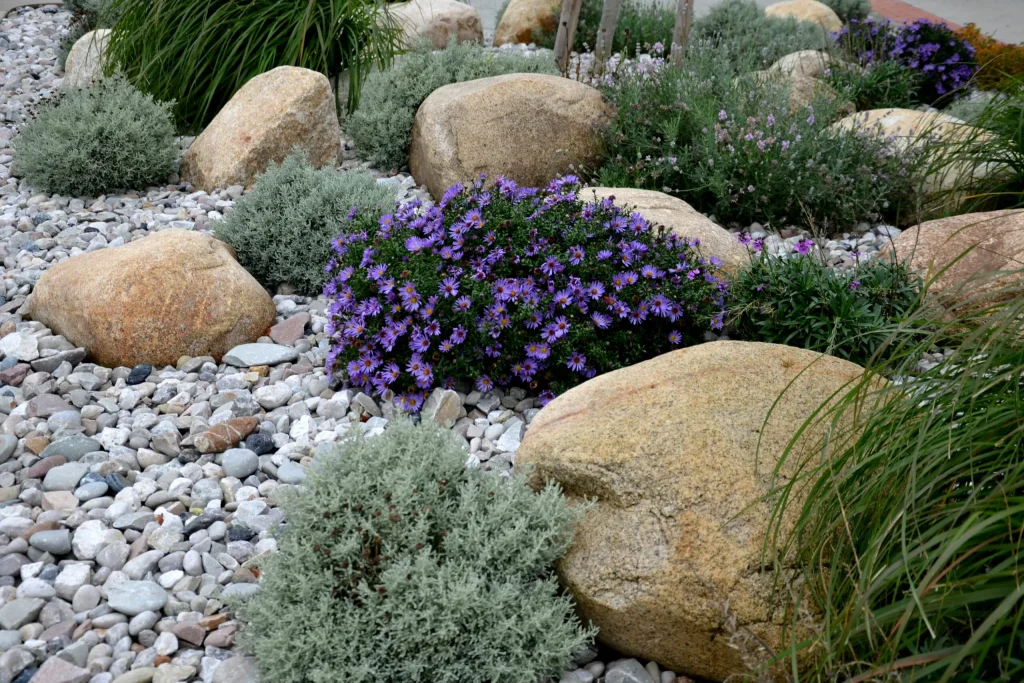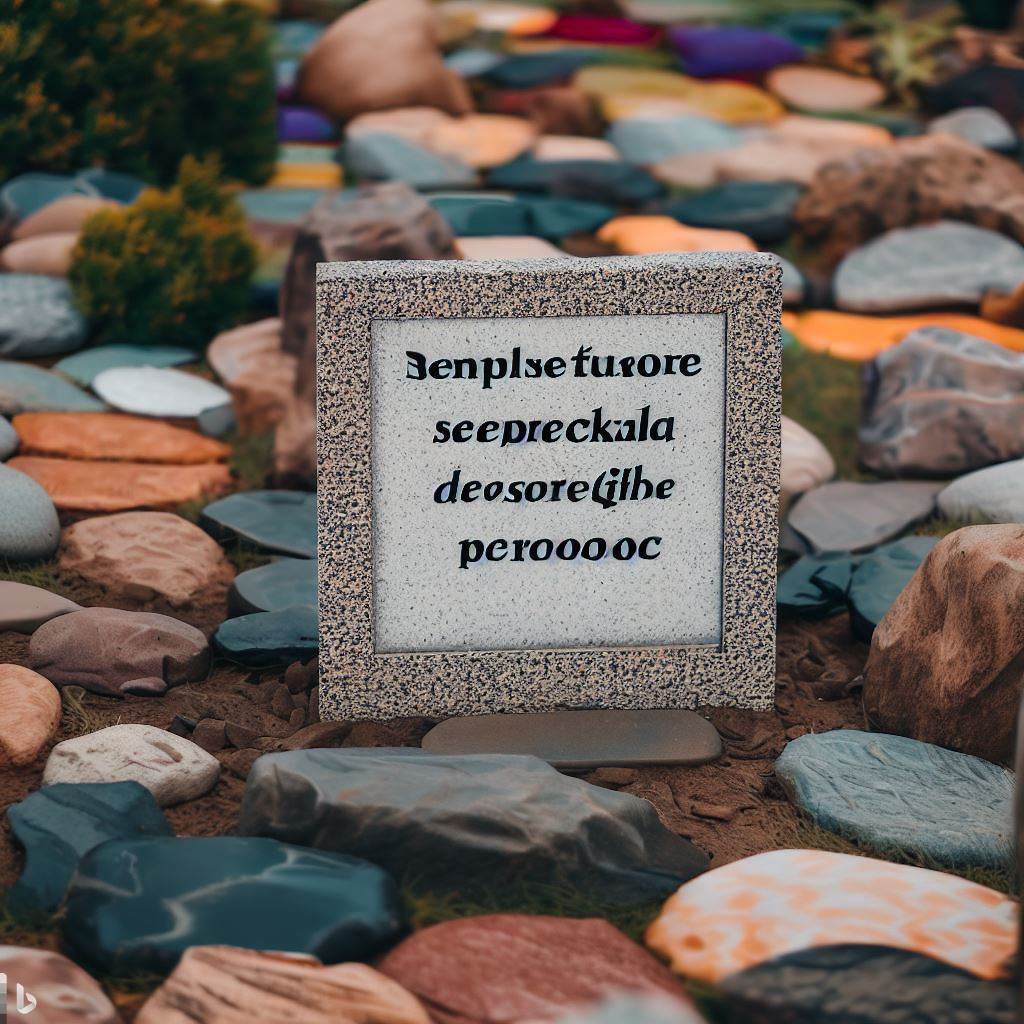Stones and rocks can add beauty, functionality, and visual interest to any garden. With the wide variety of stone types, sizes, shapes and colors available, selecting the right materials for your unique landscape can seem daunting. This comprehensive guide covers everything you need to know to choose the perfect stones to complement your garden style and meet your functional needs.
Types of Garden Stones
There are many types of natural and manmade stones to consider for garden projects. Here are some of the most popular:
River Rocks
River rocks are smooth, rounded stones naturally tumbled by flowing water. They come in a variety of sizes and colors like tan, brown, gray, red and white. Small pebble-sized river rock works well as mulch while larger stones can edge beds or fill water features. The smoothness makes river rocks comfortable underfoot.
Flagstones
Flagstones are flat, irregularly shaped stones perfect for stepping stones or patios. Their natural texture and organic shapes create a timeless, rustic look. Flagstones come in sandstone, bluestone, limestone and other types. Opt for thicker stones with level surfaces for patios and walkways.
Cobblestones
Cobblestones are rounded stones 4-8 inches across. Their smaller size allows you to create intricate patterns and mosaic designs. Cobblestone surfaces withstand weather and high traffic. Use them for paths, patios, driveways and accent features like planters.
Fieldstones
Fieldstones are loose stones gathered from fields or construction sites. Their irregular sizes and shapes give fieldsone projects a casual, organic feel perfect for rock walls, edging, planter beds and rock gardens. Look for stones with relatively flat surfaces for steps and walkways.
Boulders
Boulders are extra large stones over 10 inches across used as dramatic focal points and to build foundations for walls or water features. Arrange clusters of boulders in your garden to add visual weight or create a natural stone pathway. Just be sure boulders are positioned securely.
Gravel
Gravel consists of small stones under an inch in diameter. It comes in a spectrum of natural colors. Spread gravel to create practical, low maintenance paths. Use pea gravel for smoother walking surfaces. Gravel is also an attractive mulch alternative and can fill spaces between pavers.
Lava Rocks
Lava rock originates as molten lava that forms porous, jagged stones as it cools. Red, black, orange and gray varieties are common. Lava rock brings bold color and texture to gardens. Use it in rock beds and planters or scatter it across soil as mulch. The porous nature helps improve drainage.

Stone Shapes and Textures
The shape and texture of garden stones impacts their look and function:
- Rounded river stones – Naturally smooth and flowing shapes work well in Asian-inspired Zen gardens. Textural contrast creates interest against plants. Too much smoothing loses natural character.
- Angular gravel – Jagged, irregular gravel creates rustic charm in countryside gardens. Random shapes scatter easily across soil beds as mulch. Avoid sharp edges for walking areas.
- Flattened flagstone – Flagstone’s flat shape provides solid footing for patios and paths. The uneven natural edges create free-form patterns when fitted together.
- Weathered fieldstone – Fieldstones develop pitted, cracked and faded surfaces full of character from exposure to the elements. Tumbled stones also display distressed textures.
- Rough lava rock – Bumpy, porous lava rock creates eye-catching contrast and a tropical look. The coarse texture can be uncomfortable for bare feet.
- Smooth cobblestones – Cobblestones’ rounded shaping creates a fluid, organic look well-suited to cottage gardens. The smoothness allows them to interlock neatly.
Size of Stones
Garden stones range dramatically in size from pebbles and gravel just under an inch up to massive boulders. Size and scale matter visually:
- Smaller stones like pea gravel make spaces feel intimate. Use them to create living spaces for relaxation.
- Medium-sized stones like flagstones or cobblestones add stepping stones or textural accents at normal scale.
- Extra large statement boulders lend a bold, dramatic feel and anchor focal points. Don’t overwhelm the space.
- Mixing varied sizes together adds interest. Pavers surrounded by pebbles combines textures.
- Keep proportions in mind. Small plants suit pebble mulch. Boulders match trees.
- Lay stones in gradual, logical size transitions. Place large accent stones among medium foundation.
Color of Garden Stones
Stones exhibit an array of natural earthy colors from grays and browns to reds and gold hues. Choosing colors that complement the garden scheme is key:
- Neutral tones like gray river rocks blend into the surroundings unobtrusively with diverse plants.
- Red lava stones make bold accents that attract attention and coordinate with tropical foliage.
- Gold flagstones reflect light and provide subtle warmth. Use sparingly for impact amongst cool greens.
- Mixing two or three harmonious colors creates nuance. Adjoining reds, tans and grays builds depth.
- Allow some plant foliage or flowers to pick up and echo stone colors. Green against gray flatters both.
- Subtle gradations in a single hue, like light to dark gray, makes a soothing monochromatic statement.
Stone Selection by Garden Style
Certain stones work especially well to enhance specific garden themes and styles. Consider how stone choices complement the overall design:
Cottage Gardens
Cottage gardens embody informal country charm. Cobblestones in a mix of shapes and colors laid in loose, imperfect patterns evoke this style. Fieldstones and flagstones also suit the casual look.
Zen Gardens
Create calm through simplicity in Zen courtyard gardens. Clean lines of raked gravel symbolize water. Groupings of rounded, natural river rocks represent islands. Stone lanterns and benches encourage meditation.
English Gardens
Fieldstones and flagstones laid in winding, organic patterns, white gravel pathways, and weathered boulders placed with climbing vines capture classic English garden romance. Wrought iron benches and arbors fit nicely.
Mediterranean Gardens
Bold splashes of color characterize Mediterranean gardens. Painted terra cotta pots and vibrant Mexican beach pebbles make bright accents against the stone house. Weathered terracotta pavers extend living spaces outdoors.
Rock Gardens
Rock gardens showcase an artistically arranged mix of boulders, stones, gravel and plants native to rocky alpine environments. Lava rock and chipped limestone mimic cliffsides while mossy boulders evoke mountain heights.
Tropical Gardens
Capture tropical flair with brightly hued lava stones and Mexican pebbles. Rough Thai river rocks fit among big leafy foliage. Accent with Balinese stone statues and wood elements for an exotic paradise.
Modern Gardens
Clean lines, abundant geometry and a color focus on whites and grays embody modern landscape style. Interlocking white pebble strips, rectilinear gravel beds, glossy rectangular pavers, and asymmetric quartz boulders communicate modernity.
Choosing Stone Shapes
In addition to loose stones, rock and stone can be shaped into interesting forms like tiles, bricks and blocks for hardscaping projects:
- Stone pavers – Precut stone tiles with flat, even shapes install neatly as patios, walkways and pool decks. Popular paver types include travertine, bluestone, limestone and granite.
- Stone bricks – Stone bricks stack easily into classic patterns. Their small scale suits edging beds or lining paths in traditional gardens. Softer Italian tumbled bricks make a less formal look.
- Cut flagstones – Though flagstone’s naturally irregular form resists uniformity, cut flagstone maintains the stone’s rocky texture in tidy rectangles. This makes a smoother walkway or patio surface.
- Stone blocks – Roughhewn square stone blocks construct rustic walls and foundations for raised beds or steps. Larger blocks carve statement staircases. Granite blocks make substantial counter spaces for outdoor kitchens.
Functional Considerations
Along with their look, ensure stones suit their intended function in the garden:
- Select smooth, rounded stones like river pebbles for barefoot-friendly areas like pool decks.
- Flat, level stones like flagstones or pavers allow easy walking across a path or patio surface without tripping hazards.
- Small gravel spreads easily as inorganic mulch across planting beds to suppress weeds and retain moisture.
- Bigger stones like boulders anchor elements like soil on slopes and prevent erosion.
- Angular gravel provides traction underfoot in rainy climates and areas needing drainage.
- The Ultimate Guide to Growing Strawberries in Raised Beds - August 8, 2025
- No-Dig Garden Beds: The Easiest Way to Grow a Beautiful Garden - August 6, 2025
- How to Protect and Preserve Wood for Raised Garden Beds - August 6, 2025

